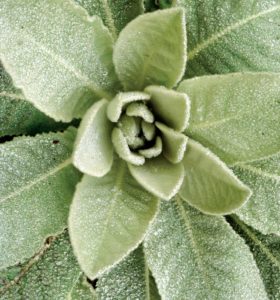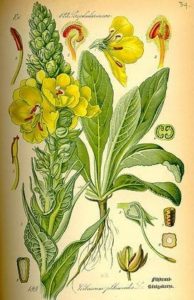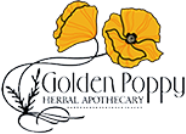The family name of Mullen was derived from the word scrofula, which is now known to mean Tuberculosis. Mullen was often used in Ireland to treat tuberculosis. It is thought to have traveled to the Americas through the dirt on the ships that came over and is now spread throughout North America in about 5 different species. (1) There are approximately 300 species of Mullen that are native to Eurasia and North Africa (2). Mullin can be found along roadsides and in rocky and gravel banks. It thrives in full sun and grows well in arid conditions. Mullen has a spindle shaped root, which produces the beautiful basal rosette seen below. It also has soft hairs that feel similar to velvet. (1) Because of this, the leaves can be a great substitute for toilet paper when out in the woods. 
(Image source) It's flowers are abundant when blooming and also make great medicine, though they can be tedious to collect 
(Image Source) I ran two tests with Mullen, the first test was through smoking the dried leaves, and the second was through a tea infusion. Smoking Mullen gave me a feeling of being comfortable, relaxed, tired and seemed to brighten my mood. The tea infusion had a similar effect on me as smoking Mullen did. The tea, because of its mucilaginous properties was quite thick and actually tasty. 
MATERIA MEDICA: MULLEN
Latin name: Verbascum thapsus Family: Scrophulariaceae or figwort family TCM Name: Jia yan ye- Infused oil - use ½ cup oil with about a cup of Mullen blossoms in a double boiler. Boil over low heat for at least three hours.
- Tea - use about 1 tbsp dried Mullen leaves or flowers and in 8oz of just boiled water, let steep for at least 20 minutes, three times/day
- Tincture - 2.5-5 mL of 1:5 in 40% three times/day
- Syrup - use a tea infusion and add honey and brown sugar, heat until it thickens.
- Smoked -use the dried leaves of Mullen for smoking. (1)
- Mullen is known for its ability to relieve children’s earaches. In oil form a few drops helps to relieve the pain and reduce inflation.
- It works well in treatment of bronchitis, asthma, tuberculosis, and a dry cough. It’s mucilage, Expectorant, Demulcent, and Catarrh qualities all help to aid in ridding the body of excess mucus in the respiratory system, calming the system down and soothing when irritated (1).
- It can be applied topically in soothing bruises, acne, boils, eczema, sore joints and tumors (3).
- It has sedative affects and can aid in sleeping.
- Emotionally it can help one to gain the ability to hear ones inner voice, those who struggle with indecisiveness, and gain truth and insight.
- It helps the individual in times when it must wrestle with ones own conscious. (4)
- 1. Fundukian, Laurie J. The Gale Encyclopedia of Alternative Medicine. Detroit: Gale, Cengage Learning, 2009. Print
- 2. Kane, Charles W. Herbal Medicine Trends and Traditions: A Comprehensive Sourcebook on the Preparation and Use of Medicinal Plants. Oracle, AZ: Lincoln Town, 2009. Print.
- 3. Mars, Brigitte. The Desktop Guide to Herbal Medicine: The Ultimate Multidisciplinary Reference to the Amazing Realm of Healing Plants, in a Quick-study, One-stop Guide. Laguna Beach, CA: Basic Health Pub., 2007. Print.
- 4. Kaminski, Patricia, and Richard Katz. Flower Essence Repertory: A Comprehensive Guide to North American and English Flower Essences for Emotional and Spiritual Well-being. Nevada City, CA: Flower Essence Society, 1994. Print.
- 5. Herbarium's Mullein Monograph



